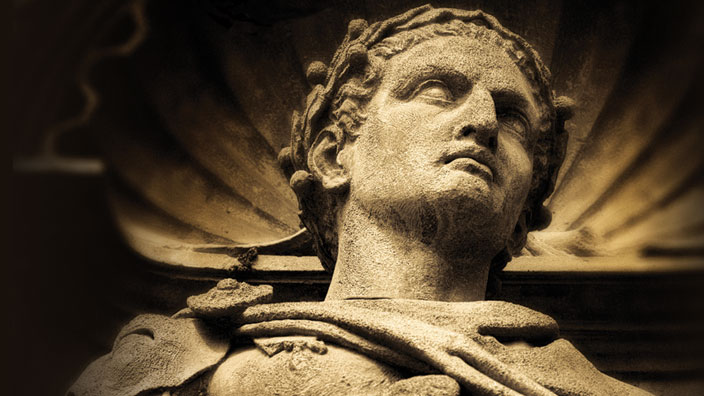
PHOTO: colombia.edu
New Year’s Day seems like one of those facts of life that has always existed. The sun goes down on the old year and rises with the new. Humans around the world throw a massive party with lots of booze, games, and party snacks, and watch the ball drop in Times’ Square after the long-awaited countdown.
We haven’t always been celebrating New Year’s on January 1st, though. In fact, New Year’s Day was celebrated for the first time in 45 B.C., when the Julian calendar first took effect. Of course, it wasn’t all smooth sailing from there. We don’t follow the Julian calendar today. By the Middle Ages, Julius Caesar’s calendar needed a little tweaking. You’ll see why.
It all began when Julius Caesar took power and decided to reform the old Roman calendar. You see, the previous, early version of the Roman calendar consisted of twelve months with a total of 355 days. The ideal cycle consisted of alternating a year of 355 days with what’s called an “intercalary” year of an extra 377 or 378 days (the extra days were inserted between February and March, placing the start of the New Year in March). This would average out to each Roman year having 366.25 days over four years, with an average drift of about one day per year relative to any equinox or solstice.
This was actually a pretty good way of setting up a calendar…until you throw the Roman politicians into the mix.
Politicians in power were entirely responsible for deciding which years were regular years and which years were intercalary years. Of course, politicians could then abuse their power, and what would often happen was, because a magistrate’s term of office corresponded with a calendar year, he could then lengthen a year when he or one of his allies was in office, and refuse to lengthen one when his political opponent was in power. They did this all the time!
Eventually, this started happening way too often. The calendar became completely out of alignment with the seasons, and regular Roman people never knew what the date was because Roman officials were always shifting it around to suit their own office.

PHOTO: guff.com
When Julius Caesar took office and established the Roman Empire, he decided to fix all this and permanently solve the problem by creating a calendar that stayed aligned with the sun and the seasons without any human intervention.
Julius Caesar called upon Sosigenes, an Alexandrian astronomer, who told him that they ought to abandon the lunar cycle entirely and instead follow the solar year like the Egyptians did. Sosigenes calculated the year to have 365.25 days. Julius Caesar then added 67 days to 45 BC, making 46 BC begin on January 1st, rather than in March. He also decided that, every four years, a day would be added to February to theoretically keep his calendar from getting misaligned.
Unfortunately, Sosigenes got his math a little wrong. The correct value for the solar year is 365.242199 days, not 365.25. 11-minutes might not seem like much of an error, but by the year 1000, seven days were added to the calendar year, and 10 days by the mid-15th century, meaning people weren’t actually celebrating New Years’ Day on January 1st anymore.
Eventually, the Roman church figured out the problem, and in the 1570s, Pope Gregory XIII asked the Jesuit astronomer, Christopher Clavius, to create a new calendar. By 1582, twelve years later, it was finished and the Gregorian calendar was put in place. Ten days were taken off of the current new year, and only one of ever four centennial years would be a leap year. Since then, the calendar has not fallen out-of-step with the real seasons and movement of the sun, and every year we celebrate the precise arrival of the New Year on January 1st.

